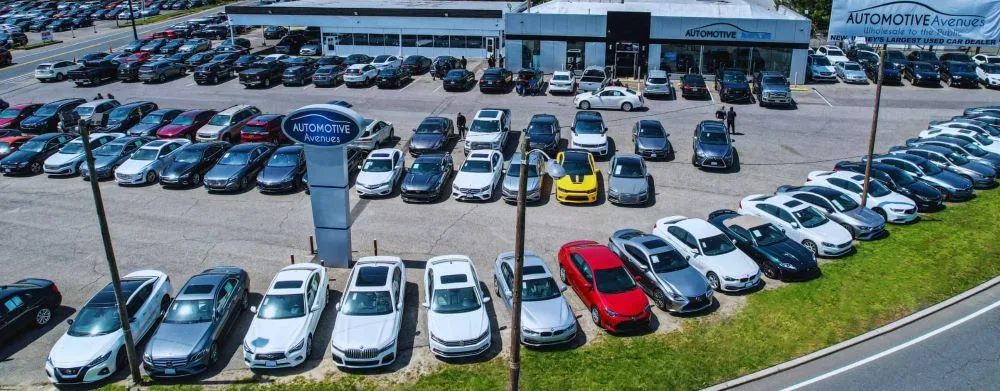Step-by-Step Guide to Buying a Car: Expert Insights and Tips
Your Car Buying Guide
Navigate the car-buying process with confidence using our expert insights and practical advice.
Introduction
Welcome to Your Guide to Buying a Car
Our comprehensive guide is designed to help both first-time buyers and seasoned car owners make informed decisions. From choosing the right vehicle to understanding financing options, we cover all the essential steps to ensure a smooth and successful car purchase.
Auto Insurance Insights
Choosing the Right Auto Insurance
Selecting the right auto insurance is a critical part of buying a new car. It not only protects your investment but also ensures peace of mind on the road.
Understand the various types of coverage available, including liability, collision, and comprehensive insurance. Each type offers different levels of protection and is suited to different needs and budgets.
Factors such as your driving history, the type of car you purchase, and your location can influence insurance quotes. Knowing these factors can help you find a policy that fits your requirements and budget.
Top 5 Mistakes to Avoid
Common Pitfalls When Buying a Used Car
Buying a used car can be a great way to save money, but it’s essential to avoid common mistakes that can lead to costly regrets. Here are the top 5 mistakes to avoid:
1. Skipping the Vehicle History Report: Always check the vehicle’s history report to uncover any past accidents, title issues, or service records.
2. Neglecting a Thorough Inspection: Have a trusted mechanic inspect the car to identify any hidden problems that may not be apparent during a test drive.
3. Overlooking a Test Drive: A test drive is crucial to assess the car’s performance, comfort, and handling. Never skip this step.
4. Ignoring Financing Options: Explore different financing options to ensure you get the best deal. Don’t just rely on the dealership’s offer.
5. Failing to Negotiate: Always negotiate the price. Used car prices are often flexible, and you can save money by negotiating effectively.
The Ultimate Checklist
Buying a new car is an exciting experience, but it’s important to stay organized and informed. Here’s the ultimate checklist to guide you through the process:
1. Research Models: Start by researching different car models to find one that fits your needs and budget.
2. Set a Budget: Determine how much you can afford to spend, including the cost of the car, insurance, taxes, and maintenance.
3. Check Financing Options: Explore various financing options and get pre-approved for a loan to streamline the buying process.
4. Test Drive: Schedule test drives for your top choices to evaluate their performance and comfort.
5. Review Safety Features: Ensure the car has essential safety features such as airbags, anti-lock brakes, and stability control.
6. Compare Prices: Compare prices from different dealerships to find the best deal.
7. Inspect the Vehicle: Even new cars should be inspected for any defects or issues before finalizing the purchase.
8. Finalize the Deal: Once you’re satisfied, finalize the deal and complete the necessary paperwork.
Following this checklist will help you make a well-informed decision and ensure a smooth car-buying experience.
Understanding Car Insurance Quotes
Car insurance quotes can vary significantly based on several factors. Understanding these factors can help you get the best deal:
1. Driver’s Age and Experience: Younger and less experienced drivers typically face higher insurance rates.
2. Vehicle Make and Model: The type of car you drive affects your insurance premium. High-performance or luxury cars usually cost more to insure.
3. Driving Record: A clean driving record with no accidents or traffic violations can lower your insurance costs.
4. Location: Where you live impacts your insurance rates. Urban areas with higher traffic and crime rates may result in higher premiums.
5. Coverage Levels: The amount of coverage you choose, including liability, collision, and comprehensive, will affect your quote.
To compare quotes effectively and get the best deal, follow these tips:
1. Shop Around: Get quotes from multiple insurance providers to compare rates and coverage options.
2. Bundle Policies: Consider bundling your auto insurance with other policies, such as home or renters insurance, to receive discounts.
3. Increase Deductibles: Opting for a higher deductible can lower your premium, but make sure you can afford the out-of-pocket expense in case of a claim.
4. Ask About Discounts: Inquire about available discounts for safe driving, low mileage, or having safety features in your car.
By understanding these factors and comparing quotes, you can find a car insurance policy that offers the best value for your needs.
Seasonal Savings
The Best Times of Year to Buy a Car
Timing your car purchase can lead to significant savings. The end of the year, particularly December, is a great time to buy as dealerships are eager to meet annual sales quotas. Additionally, the end of each quarter (March, June, September, and December) often sees dealerships offering promotions to boost their quarterly sales figures. Holiday weekends, such as Memorial Day and Labor Day, also provide opportunities for discounts and special financing deals. By understanding these seasonal trends, you can maximize your savings on your next car purchase.
Financing Your Car
How to Finance Your Car Purchase: Options and Tips
Securing the right financing is crucial when buying a car. Start by checking your credit score, as it significantly impacts the interest rates you’ll be offered. Consider getting pre-approved for a loan from your bank or credit union to understand your budget and strengthen your negotiating position. Explore different financing options, including dealer financing, which may offer promotional rates but can sometimes come with higher overall costs. Always compare the annual percentage rate (APR) and the total cost of the loan over its term. By doing your homework, you can find a loan with favorable terms that fits your financial situation.
Test Drive Tips
What to Look for During a Test Drive: Expert Tips
A test drive is your chance to ensure the car meets your needs and expectations. Start by checking the exterior and interior for any signs of damage or wear. Once on the road, pay attention to the car’s handling, acceleration, and braking. Test the vehicle on different types of roads and at various speeds to get a comprehensive feel for its performance. Listen for any unusual noises and check the comfort of the seats and the functionality of features like the air conditioning, infotainment system, and safety technologies. Don’t rush the process; a thorough test drive is essential to making an informed decision.
Additionally, consider how the car fits into your daily life. Is there enough cargo space for your needs? Are the controls intuitive and within easy reach? If you have a family, ensure there’s adequate room for car seats and that the back seats are comfortable. Finally, trust your instincts. If something doesn’t feel right during the test drive, it’s worth investigating further or considering other options. A test drive is a critical step in the car-buying process, so take your time to evaluate the vehicle thoroughly.
Ensure a Smooth Ride
Certified Pre-Owned vs. Used Cars: Which Is Right for You?
When deciding between a certified pre-owned (CPO) vehicle and a regular used car, it’s essential to weigh the benefits and drawbacks of each. CPO vehicles typically come with a manufacturer-backed warranty, have undergone rigorous inspections, and often include additional perks like roadside assistance. However, they tend to be more expensive than their non-certified counterparts. On the other hand, regular used cars can be more affordable and offer a wider selection, but they may lack the comprehensive checks and warranties that CPO vehicles provide. Your choice will depend on your budget, the level of assurance you need, and the specific perks you value.
Essential Car Features You Should Prioritize
10 Essential Car Features You Shouldn't Compromise On
When buying a car, certain features are non-negotiable to ensure safety, comfort, and convenience. First and foremost, prioritize advanced safety features like anti-lock brakes, airbags, and electronic stability control. Modern technology such as a reliable infotainment system, Bluetooth connectivity, and navigation aids can enhance your driving experience. Comfort features like adjustable seats, climate control, and ample legroom are also crucial for long drives. Additionally, consider fuel efficiency, which can save you money in the long run, and ample cargo space to accommodate your lifestyle needs. These essential features can significantly impact your satisfaction with your new vehicle.
Leasing vs. Buying: Which is Right for You?
The Pros and Cons of Leasing vs. Buying a Car
Deciding between leasing and buying a car depends on your financial situation and lifestyle preferences. Leasing a car typically requires lower monthly payments and allows you to drive a new vehicle every few years, which can be appealing if you enjoy the latest features and technology. However, leases come with mileage limits and potential fees for excessive wear and tear. Buying a car, on the other hand, means higher monthly payments but no mileage restrictions, and you build equity in the vehicle over time. Ownership also allows for customization and the freedom to sell the car whenever you choose. Consider your driving habits, financial goals, and how long you plan to keep the vehicle when making your decision.
Stay Informed and Drive Confidently
Making an informed decision when buying a car is crucial. Our comprehensive guide has provided you with essential tips and advice to navigate the car-buying process with confidence. If you need further assistance with auto insurance, don’t hesitate to reach out to Cal Patriot Insurance Services. We’re here to help you secure the best coverage for your new vehicle.

